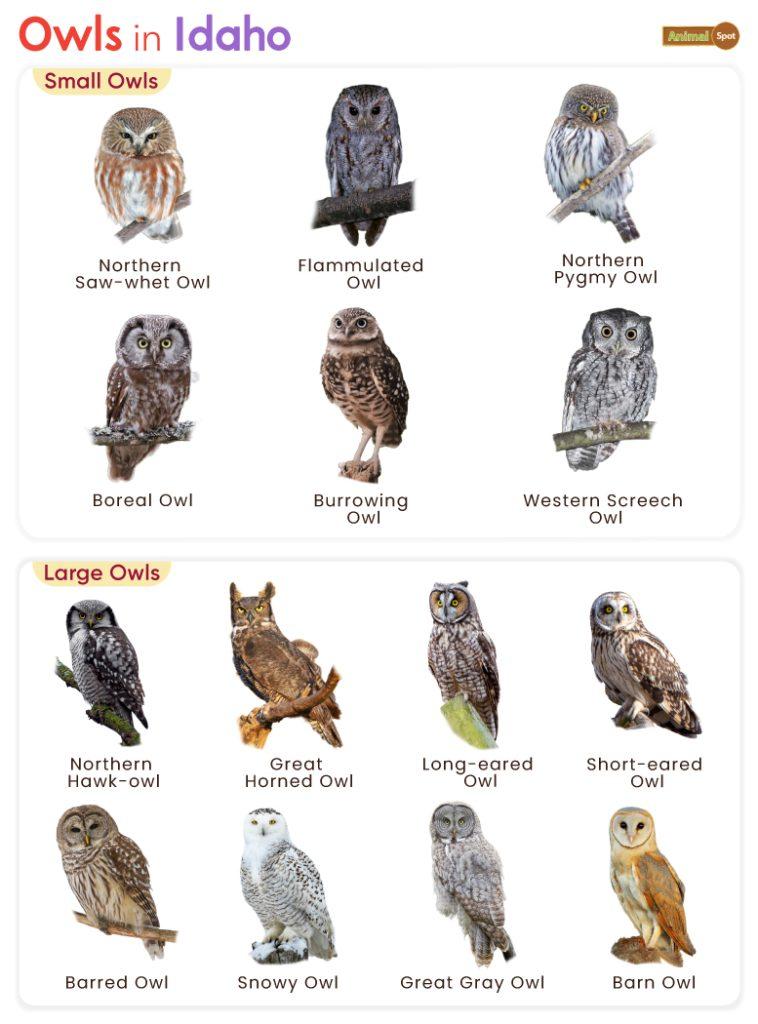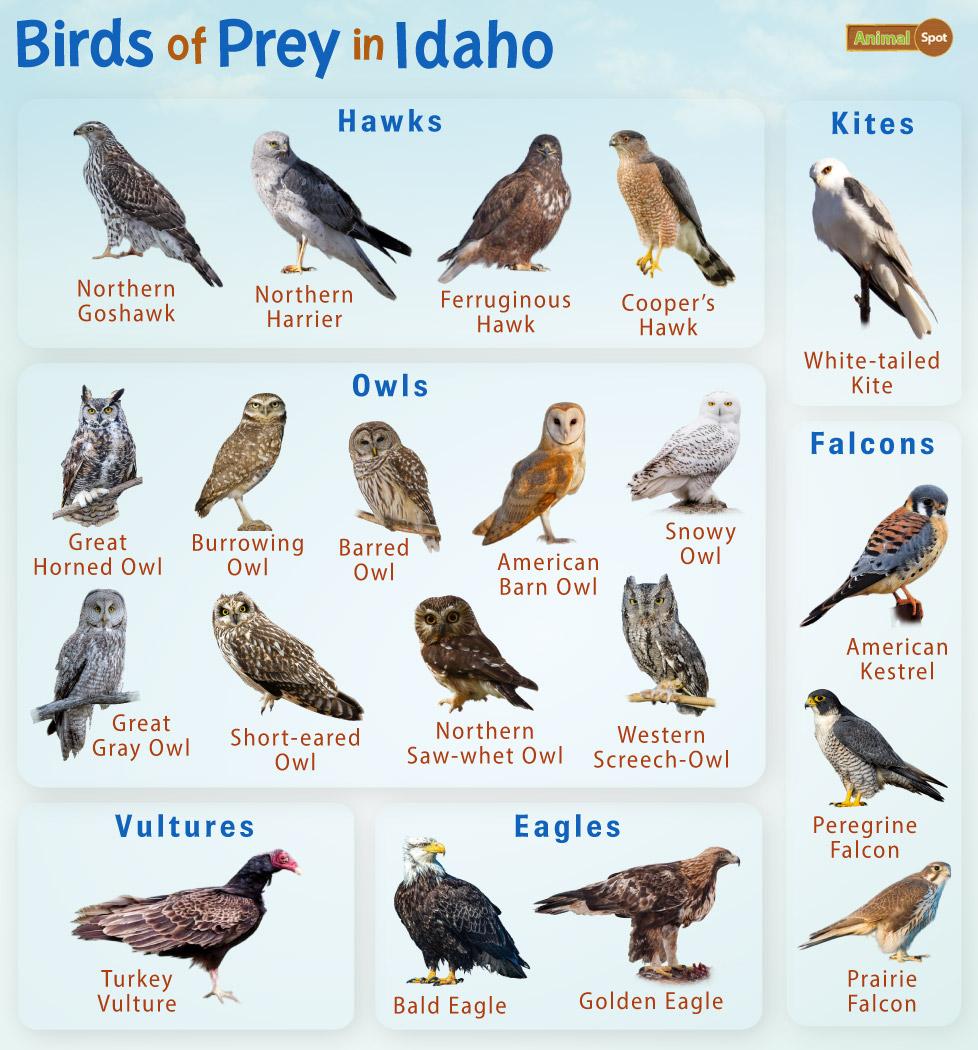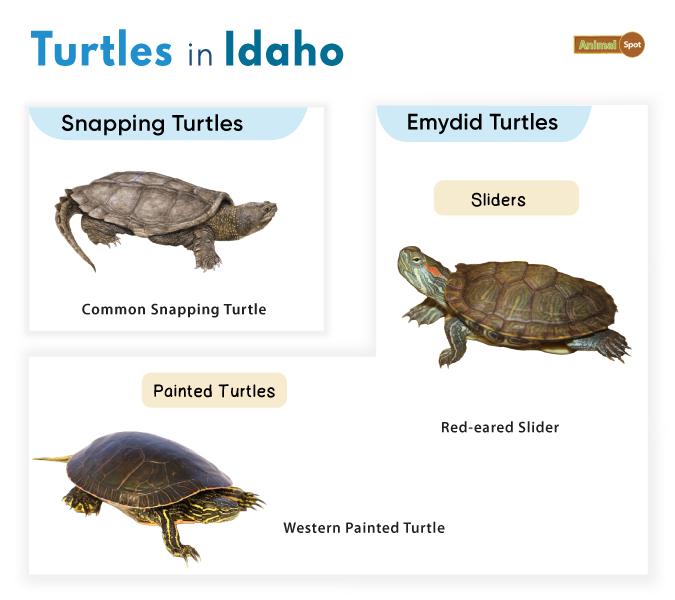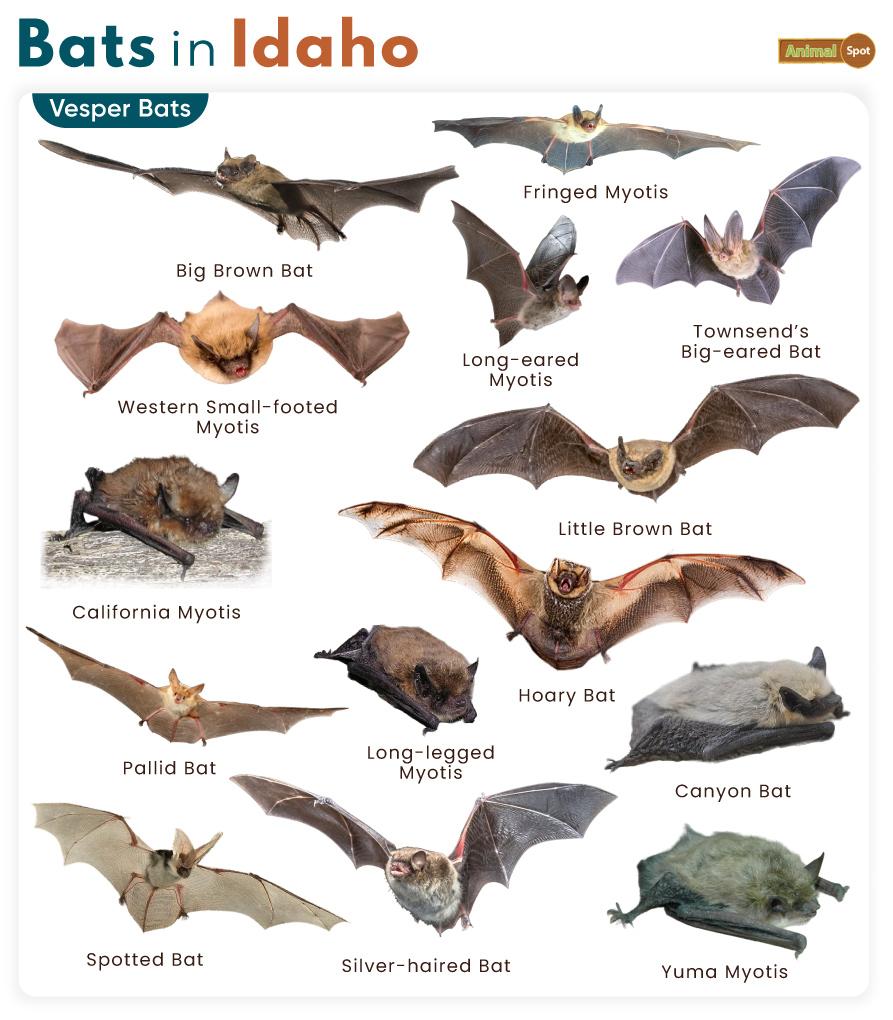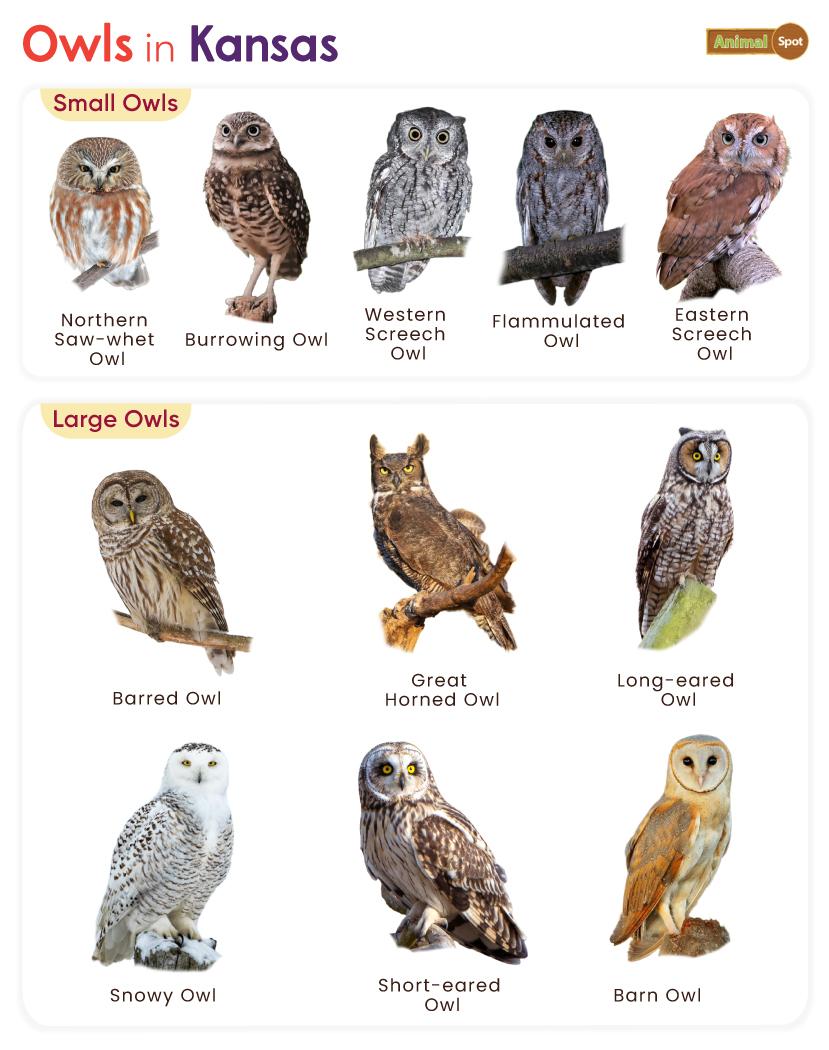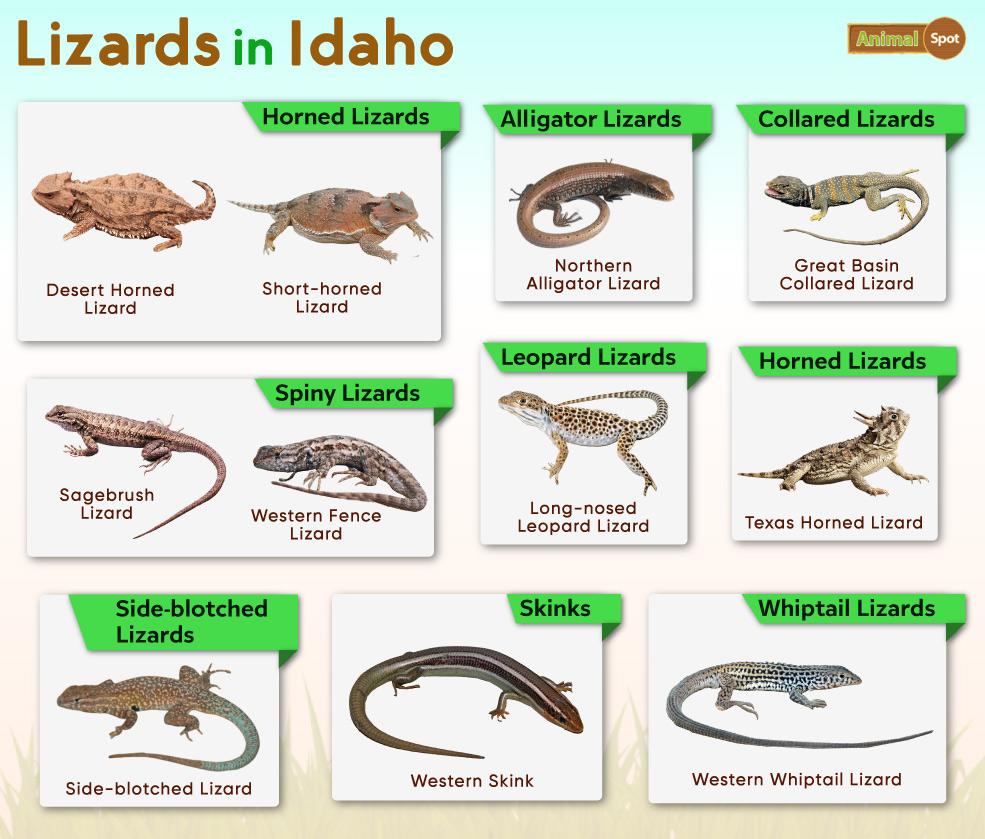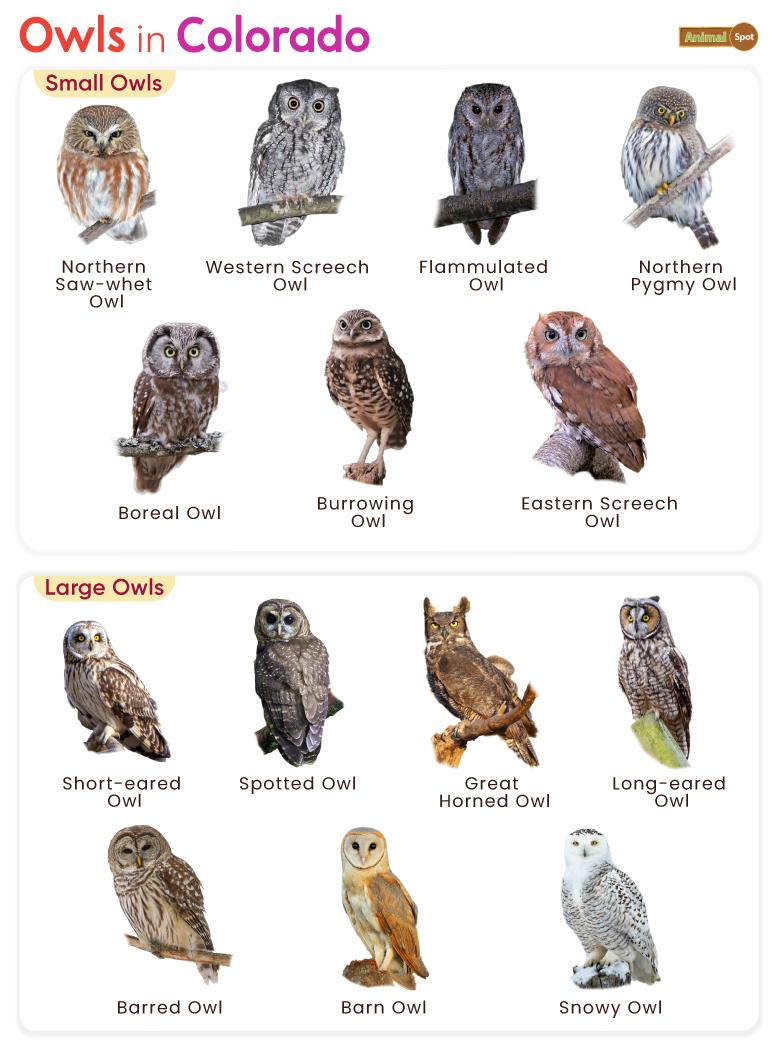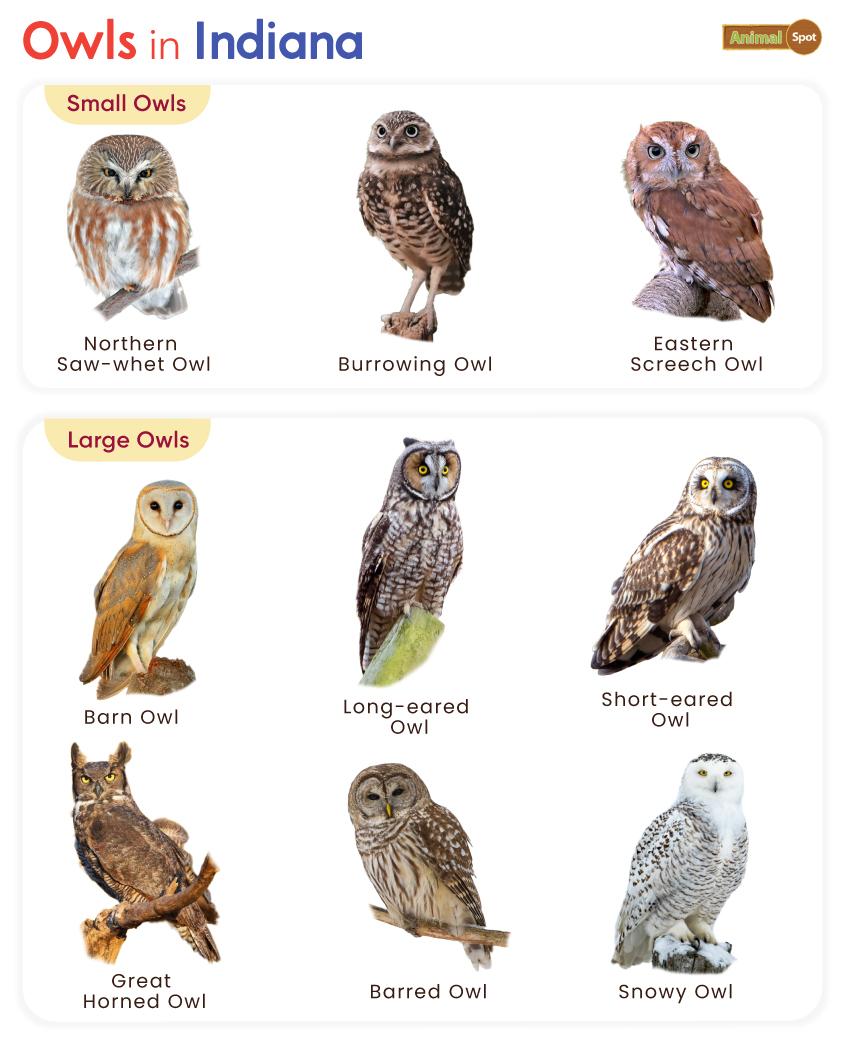Small Owls Northern Saw-whet Owl Length: 7 – 8 inches Native Common throughout the state, especially in forested areas like Payette National Forest and Boise National Forest Spring (March to April) Western Screech Owl Length: 8.7 inches Native Abundant in forests at high elevations, like the Boise Foothills Late winter to early summer (February to May) Northern Pygmy Owl Length: 5.9–6.7 inches Native Lives in forested areas like the Sawtooth National Recreation Area and the Clearwater National Forest Spring to early summer (Late April to June) Boreal Owl Length: 8.7–10.6 inches Native Though quite elusive, sightings occur in remote forests in Boise, Caribou, Clearwater, Panhandle, Payette, Salmon, and Targhee Spring to summer (March to July) Burrowing Owl Length: 9-11 inches Accidental Mostly seen in the southwestern part of Idaho , like Minidoka National Wildlife Refuge Late winter to early spring (February to August) Flammulated Owl Length: 6.5-7.5 inches Accidental They are extremely common south of the Salmon River, around ponderosa pine trees Late spring to early summer (mid-April to July) Large Owls Barn Owl Length: 12-16 inches Native Very common in southwest Idaho, sightings become rarer in the north and east Year-round, with peaks in late winter and spring (March to June) Great Horned Owl Length: 18-25 inches Native Extremely common except for the highest elevations, with sightings in Craters of the Moon National Monument, City of Rocks National Reserve, and Boise River Greenbelt Late fall to early winter (November to January) Barred Owl Length: 16-24 inches Native Decently common in northern Idaho and around the Frank Church-River of No Return Wilderness Late winter to spring (February to April) Short-eared Owl Length: 13-17 inches Native Common in southern Idaho, as well as Camas Prairie and Palouse Varies, often in early spring (March to June, peaking in April) Long-eared Owl Length: 13-16 inches Native Most common in southern Idaho in places like Boise National Forest, but are less common in other parts of the state From late winter to early spring (around February to April) Northern Hawk -owl Length: 14.2-17.6 inches Accidental Occasional visitor in northern Idaho Late winter to early summer (mid-February to May) Great Gray Owl Length: 24-33 inches Accidental They have been seen in thenorthern panhandle, as well as central-western Idaho and the Frank Church-River of No Return Wilderness Spring to early summer (March to May) Snowy Owl Length: 20-27 inches Accidental Occasional visitors to the northern part of the state Varies by region and based on prey availability (any time between May and September) 
